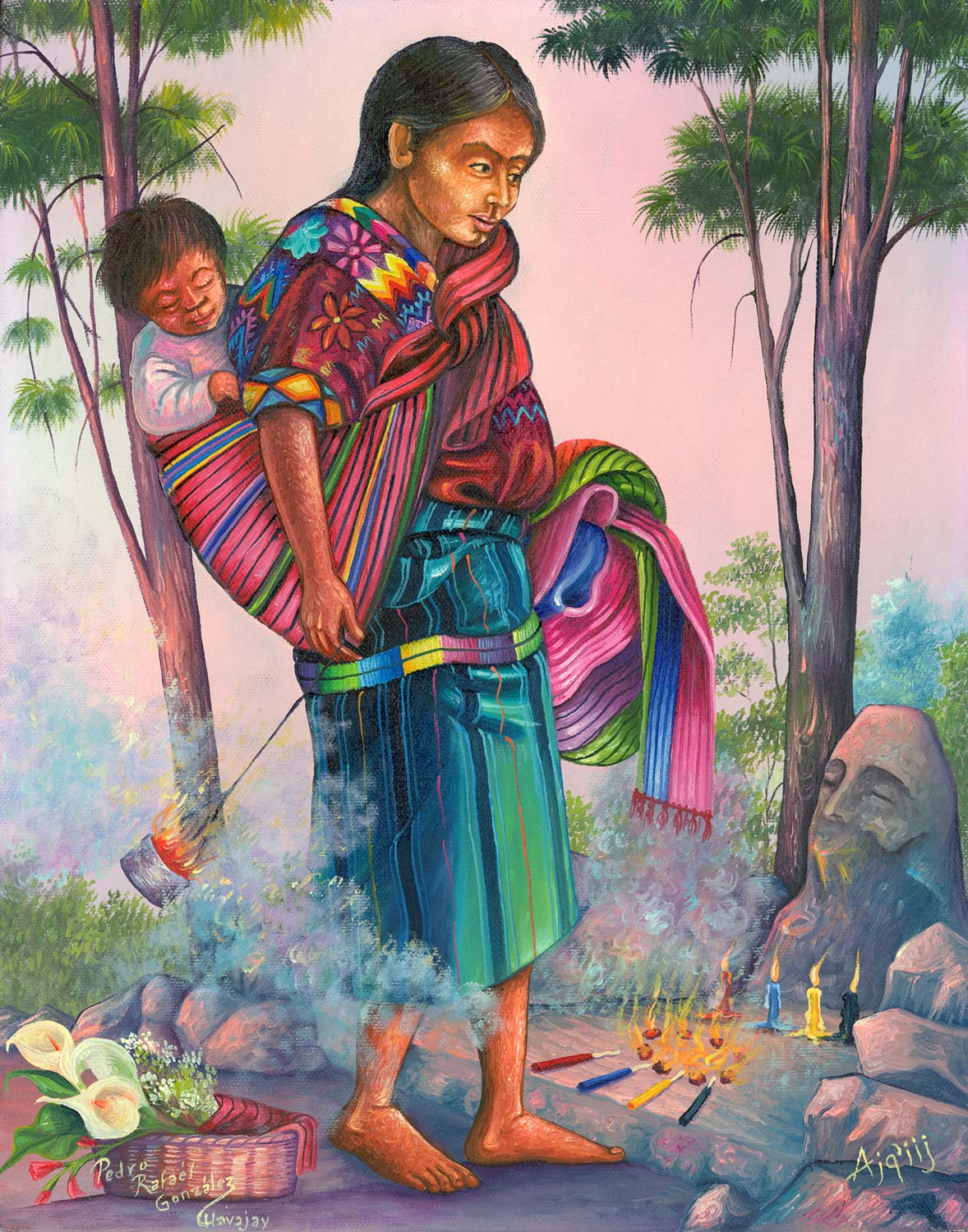Ajq’ijaab are timekeepers, spiritual guides who specialize in using the Maya lunar calendar to measure time and space. Each day has its own nawal or energy. An ajq’iij (singular of ajq’ijaab) can interpret the energies of each day by analyzing the day’s nawal in combination with the numbers 1 to 13. With this insight, the ajq’iij begins a dialogue between themself and the energies, positive or negative, and can thus help others to interpret and understand their problems, needs and goals.
Under the influence of other cultures, some Maya traditions have been relegated to folklore. The dignity and significance of a Maya ajq’iij is not expressed by the approximate European terms “shaman,” or Maya “priests” or “priestesses.” An ajq’iij is a numinous mediator working for the good of humanity, in the context of the Maya calendar and community. One of the most important duties of the ajq’iij is to lead ceremonies and rituals to guide people along the spiritual path, and to offer guidance in the material world.
An ajq’iij has special insight, like that of the very first humans. The Popol Wuj, the K’iche’ Maya creation story, describes how the first people could see everything:
Perfectly they saw, perfectly they knew everything under the sky whenever they looked. The moment they looked around in the sky, on the earth, everything was seen without any obstruction. They didn’t have to walk around before they could see what was under the sky; they just stayed where they were. As they looked their knowledge became intense. Their sight passed through trees, through rocks, through lakes, through seas, through mountains, through plains. (Popol Vuh, Dennis Tedlock.)
Jean Molesky Poz wrote in Contemporary Maya Spirituality that: “Aware of both hidden and manifest spirit presences, [ajq’iijaab’] maintain their connection with the spirit world, through silence, prayer, abstinence, and ritual practice.” Their mission is to help humanity learn to live with all created beings that inhabit the cosmos.
The ajq’ijaab’, like Maya healers (ajkum), Maya midwives (iyomaa’) and Maya bone setters (ji’ol b’aaq’), are Maya spiritual callings. There is often a sign at birth that the newborn is destined to become an ajq’iij, but only the parents and iyoom will know this. When the person becomes an adult, he or she is called to become an ajq’iij through their dreams, as well as their birth Ch’umilal (the sign of the day of their birth on the 260-day lunar calendar). If they resist the calling, they often become sick. Their healing involves accepting their vocation, and their dreams connect them with the energies of the spirit world. The connection with the energies of the spirit world guides them.
Like all Maya spiritual guides, an ajq’iij is in essence married to their profession. They treat their profession as one would a spouse, consulting and respecting the other. Each ajq’iij has their sacred envoltario, a little bag similar to a medicine pouch, that they use in rituals. Like the other Maya spiritual professions, their services are rendered without expectation of compensation.


